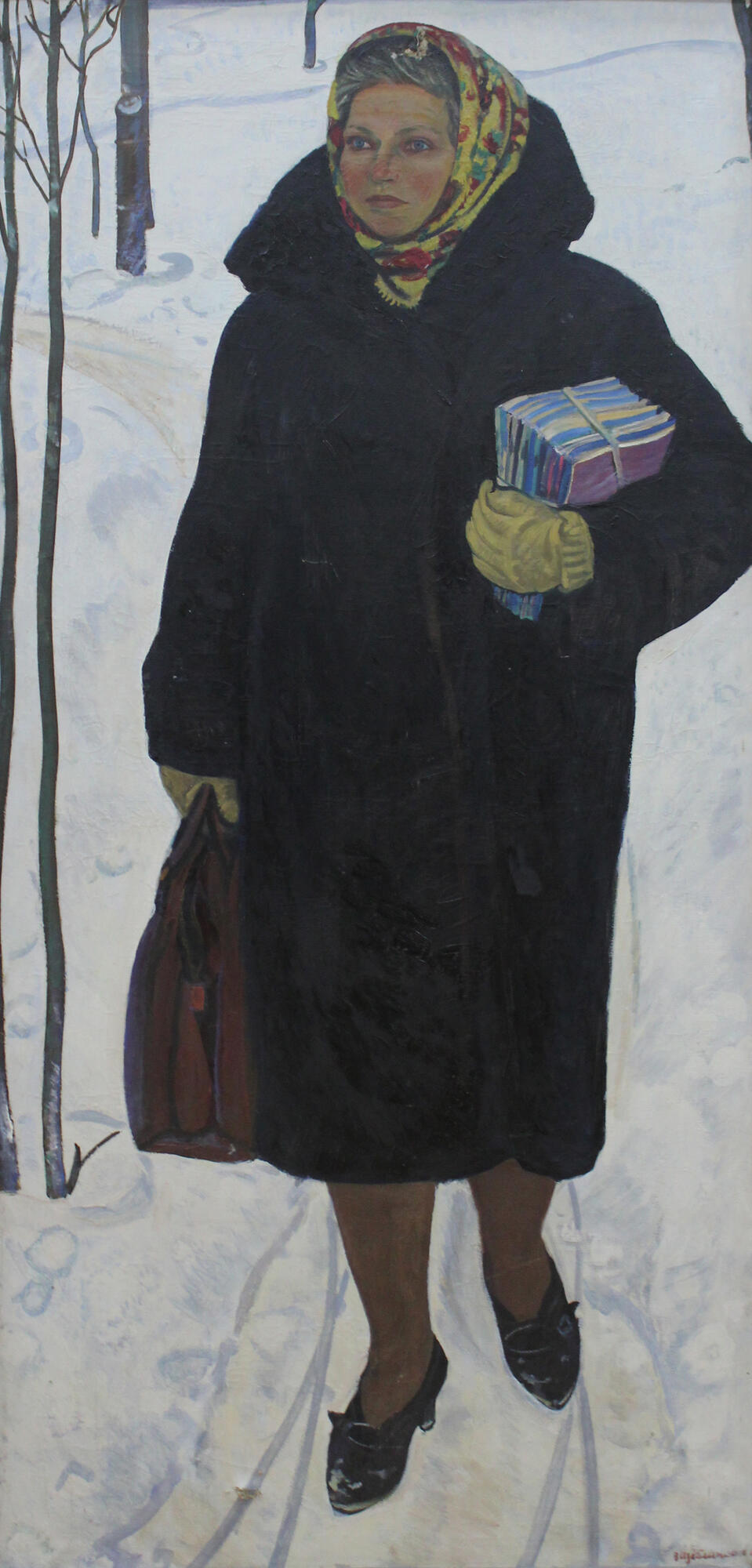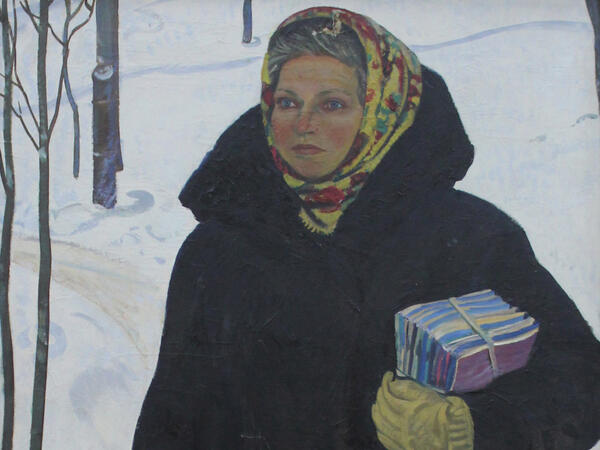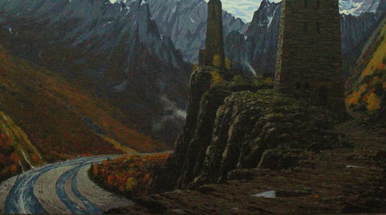The artist Valentin Scheblanov painted “Teacher Mariya Ivanovna” in 1966. It is unknown who posed for the painting. The woman is dressed in a warm fur coat with a stand-up collar, a headscarf and gloves. The shoes, though, do not suit the season: she might have to change her shoes to work indoors. She carries a large handbag in one hand, likely with books, and a pile of notebooks twined criss-cross in another.
Teachers in the Soviet Union, despite their low salaries, tried to dress in fashion. By the beginning of the school year, they used to buy or sew new dresses or costumes, purchase matching modest heeled shoes, and get a new haircut or hairstyle — appearance meant a lot. Teachers were considered to be an example for students, so they always had to dress smartly and look neat and clean. At the same time, putting on makeup and having plenty of jewelry were not welcomed. A muted watch, a wedding ring and modest earrings were the best additions to a dress of soft color or a skirt with a blouse. Some women used lipstick of neutral color.
Valentin Scheblanov was born in the city of Grozny. At the age of three, his family moved to the city of Tikhoretsk in Krasnodar Krai. In 1945, Scheblanov entered the Rostov Art School and graduated in 1950. He then studied at the Moscow State Academic Art Institute named after V. I. Surikov where he was taught by painters Victor Tsyplakov and Vasily Yefanov.
Valentin Scheblanov worked in socialist realism. Ordinary people like workers, peasants, teachers and doctors were the main characters of his paintings. Moreover, he worked in genre art, painted landscapes and still lifes.
In 1972, Scheblanov was elected the secretary of the Artist’s Union of the RSFSR. In 1973, he became a professor at the Art and Graphics department at the Rostov Pedagogical Institute. In 1976, he was appointed a chairman of the exhibition committee of the South of the RSFSR. He died two years later at the age of 50.
Teachers in the Soviet Union, despite their low salaries, tried to dress in fashion. By the beginning of the school year, they used to buy or sew new dresses or costumes, purchase matching modest heeled shoes, and get a new haircut or hairstyle — appearance meant a lot. Teachers were considered to be an example for students, so they always had to dress smartly and look neat and clean. At the same time, putting on makeup and having plenty of jewelry were not welcomed. A muted watch, a wedding ring and modest earrings were the best additions to a dress of soft color or a skirt with a blouse. Some women used lipstick of neutral color.
Valentin Scheblanov was born in the city of Grozny. At the age of three, his family moved to the city of Tikhoretsk in Krasnodar Krai. In 1945, Scheblanov entered the Rostov Art School and graduated in 1950. He then studied at the Moscow State Academic Art Institute named after V. I. Surikov where he was taught by painters Victor Tsyplakov and Vasily Yefanov.
Valentin Scheblanov worked in socialist realism. Ordinary people like workers, peasants, teachers and doctors were the main characters of his paintings. Moreover, he worked in genre art, painted landscapes and still lifes.
In 1972, Scheblanov was elected the secretary of the Artist’s Union of the RSFSR. In 1973, he became a professor at the Art and Graphics department at the Rostov Pedagogical Institute. In 1976, he was appointed a chairman of the exhibition committee of the South of the RSFSR. He died two years later at the age of 50.



